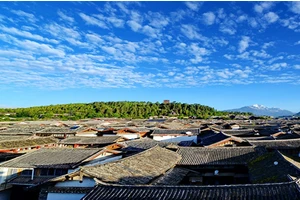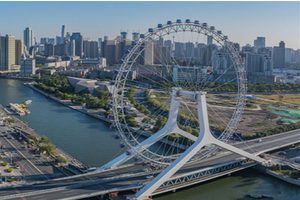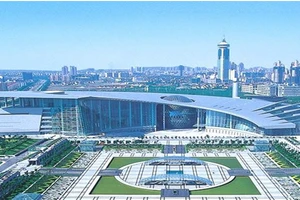Tourism league flag
1. Determine the place to go. Knowledge points to know: the main destinations and their highlights, how they are arranged on the map, the general traffic situation, the local social stability and public security situation, and the general visa policy.
2. Make an intercity trip. There are too many travel tools on the market, and paper and pen are your best friends.
3. Book transportation and accommodation, refine and modify the intercity itinerary, and make a budget.
4. Book activities and make city trips. The city plan is done separately from the previous intercity plan. My preference is to mark it directly with app or write it in my notebook.
5, travel preparation 1) Buy some new clothes for taking photos on the trip; 2) exchange of foreign exchange; 3) If necessary, buy a local calling card or rent a portable wifi; in advance; 4) Sum up what to pack, lack of sunscreen, wash bag, adapter and so on; 5) Print the reservation form that needs to be printed, copy the important documents and receipts, and 6) Load an offline map of the first city.
Reference source: How to make a travel plan?
Hami tourism must visit ten scenic spots: Hami Grand Canyon, Yumenguan, Lujian Lake, Barkol Lake, Barkol Ancient City, Hami Museum, Barkol Gaojiahu Wetland Scenic Area, East Tianshan Mountain Scenic Area, Baiyanggou Buddhist Temple Site, and Kuoshitag Desert.
1. Hami Grand Canyon: Hami Grand Canyon is a national 5A-level tourist scenic spot, which meanders like a dragon on the land of Hami. The strange peaks and steep walls seem to be the masterpieces of nature.
2. Yumenguan, Hami: Located about 90 kilometers northwest of Hami, Yumenguan witnessed the prosperity and glory on the Silk Road. In the long river of history, it carries a long history and the magnificent natural landscape is amazing.
3. Lujian Lake: Located about 50 kilometers southwest of Hami City, Lujian Lake is one of the largest inland lakes in China. The lake is highly alkaline, giving people a fantastic aesthetic feeling. The landscape of sand dunes by the lake is very spectacular, as if it were a beautiful picture scroll.
4. Barkhor Lake: Barkhor Lake is slightly oval, about 9 kilometers wide from east to west, 13 kilometers long from north to south, with an area of 113 square kilometers and an altitude of 1,585 meters. The surrounding mountains are undulating, the water plants are rich, the lake is rippling, the East Lake is rippling, the West Lake is silvery white, there is a large swamp wetland in the east of the lake, and the lake is surrounded by vast pastures.
5. Balikun Ancient City: The ancient city wall of Balikun was built after being poured and stirred by boiling water, so there will be no decaying walls such as grass seeds, which is why it is preserved so completely. According to historical records, the ancient city of Balikun was built in the Han Dynasty and lasted until the Qing Dynasty, so it was called Seoul and Mancheng.
6. Hami Museum: Located in the downtown area of Hami, Hami Museum is an important place to show the history, culture and natural landscape of Hami. There is a rich collection of cultural relics and artworks here, which gives people a deep understanding of Hami's past, present and future.
7. Barkol Gaojiahu Wetland Scenic Area: Gaojiahu Wetland Scenic Area is located in Shirenzi Township, Barkol County, with an average elevation of 1,600 meters. It is a natural ecological wetland park, and the unique beauty of lakes in Tanaka, Tianshan Mountains and wetlands attracts tourists from all over the world.
8. East Tianshan Scenic Area: The main scenic spots in Hami East Tianshan Scenic Area are: Grand White Rock Resort, Tianshan Summer Resort, Grassland Night Resort, Song Hai Resort, Hualong Resort, Power Resort, Nature Resort, Mingsha Mountain and Songshutang Ski Resort. Here, "four seasons in one day, ten miles in different days".
9. Baiyanggou Buddhist Temple Site: It is about 65 kilometers away from the urban area of Yizhou District. It is a large-scale Buddhist site in the prosperous period of Buddhism in the Tang Dynasty. It stretches for 10 kilometers from north to south, and there are many large and small Buddhist temples, pagodas and grottoes. It is the earliest and largest Buddhist site in Hami City. In 2001, it was designated as the fifth batch of national key cultural relics protection units.
10. Kuoshtag Desert: Located in the northeast of Hami, Kuoshtag Desert is one of the largest mobile deserts in China. The sand dunes are undulating like the waves of the sea. The sunrise and sunset in the desert are spectacular, which makes people feel the magnificence and mystery of nature.
Reference to the above content: Baidu Encyclopedia-Hami City
Prev: Shanghai Tourism Cup






